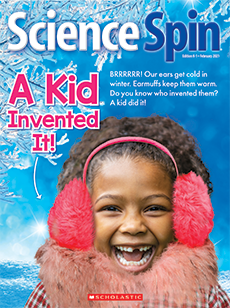March 2024
Lesson Plan: Get on the Scale, Frank!
Academic Standards
Reading Objective:
Students will identify ways that zoo scientists use knowledge of animals’ behavior to coax them onto the scale; and learn that information scientists collect is called data.
Next Generation Science Standards:
Practice 3: Planning and Carrying Out Investigations
Vocabulary:
clipboard, social, data
Use your Science Spin to find the best answer to each question.
1. Why do zoo scientists weigh the animals every year?
(to check if they are healthy and eating well)
2. Which can you say about squirrel monkeys?
(They are social.)
3. What is data?
(Data is information that scientists collect.)
4. What animal would you like to weigh? Draw how you would do it.
(Answers will vary.)
Go online to print or project the Reading Checkpoint.
- The London Zoo’s heaviest animal is Maggie the giraffe—she weighs 1,600 pounds.
- The lightest animal is a leafcutter ant, which weighs less than anounce—or about as much as a grain of sand!
- The squirrel monkeys take the longest to weigh. They would rather play with each other than step on the scale by themselves!
Materials: Stuffed animals, connecting cubes for measuring, pencils, copies of the skill sheet
Overview: Kids act like zoo scientists as they measure their own stuffed animals with connecting cubes.
Directions:
- Before the lesson, ask kids to bring in stuffed animals or animal toys they can measure. Have extras on hand OR kids can measure everyday objects in the classroom.
- Set up workstations with connecting cubes.
- Begin the lesson by reminding kids that zoo scientists regularly weigh and measure their animals. It helps them check that they’re growing well. (Weight can be a sensitive topic, of course, so you might want to avoid discussion of people’s weight. The point is: Weighing and measuring are important skills for scientists.)
- Tell kids they’ll act like zoo scientists by using connecting cubes to measure their (stuffed) animals.
- Have kids estimate their animals’ heights, then measure them with connecting cubes. How close were they?
- Record data on the skill sheets. If there’s time, kids can line the animals up from tallest to shortest!
